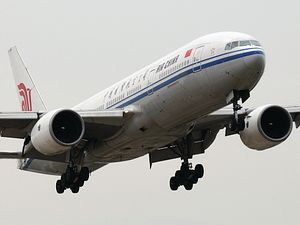China is preparing to invest RMB 77 billion ($11.9 billion) into domestic aviation infrastructure, with a particular focus on airports in rural areas, said the country’s civil aviation regulator at a State Council executive meeting last week.
The announcement suggests this will be a multi-pronged initiative. One of the aims is to build more airports in remote parts of China, especially those areas prone to natural disasters; another will target cities with large populations without existing domestic airports. More attention will be given to aviation projects relating to agricultural and forestry. The initiative will begin with 11 key construction projects and 52 aviation-related upgrades, said the Civil Aviation Administration of China. Private investments will be encouraged to take part in new airports’ construction
“The general aviation sector, especially aircraft research and manufacturing, has became (sic) a hot spot of both industrial upgrading and social concern,” said Feng Zhenglin, head of the CAAC.
The aviation sector will get preferential treatment to improve transportation, foster new growth engines, and boost employment, according to the announcement released on Wednesday. But perhaps the most interesting of all is the reallocation of resources exploration, environmental monitoring, and transportation services to the private sector, a function that has been traditionally performed by the Chinese military.
This follows the introduction of draft legislation in late April that aims to expand national defense transport to include railways, waterways, and air transport for defense purposes. But Zhao Keshi, head of the Logistical Support Department of the Central Military Commission, stressed the new concept would also aim to integrate these military transport functions with civilian and market needs.
China released plans to revitalize its aviation industry at a State Council meeting at the beginning of 2013. The government announced that it would concentrate on promoting and supporting the development of general aviation as well as the international competitiveness of Chinese airline carriers. However, there is one major hurdle: The People’s Liberation Army (PLA) controls everything. Approximately 80 percent of Chinese airspace is under the control of the PLA, an exceptionally large area when compared with the U.S. military’s 20 percent control of U.S. airspace, according to a U.S.-China Economic and Security Review Commission Report. By law, both the Civilian Aviation Administration of China (CAAC) and the military authorities govern Chinese airspace, as dictated by the State Air Traffic Control Commission (SATCC). However, the reality is that air traffic control is operated and controlled by the PLA. In addition, the director-general of the SATCC is himself a PLA major general.
The Chinese leadership understands the need for air traffic control reform and has acknowledged that civil aviation is a potential driver for further growth in the faulting economy. In August 2014, the government took a significant step by passing a rule that largely un-restricts flight operations below 1,000 meters (3,300 ft). Progress has been slow, but the announcement last Wednesday suggests things could change rapidly. Potentially driven by the regional “One Belt, One Road” logistics and economics initiative, the easing of airspace will not only open up transport across the region, but also the private aviation sector as well.
In a study of the potential $52 billion industry, the Chinese-language China Business Aviation Special Report 2016, released by Minsheng Financial Leasing and Hurun Report, suggests that China’s billionaires are driven to buy private jets for reasons such as time efficiency, the feeling of independence, and the need to maintain face. The report estimates there is an immediate “need” for 1,750 individual business jets and the private charter market size is 205,000 hours, to grow to 2,300 business jets and 270,000 hours over the next five years. As of 2015, there were only 300 private jets in China.
In a 2014 forecast report, the International Air Transport Association (IATA) predicted China will overtake the United States in terms of additional passengers per year by 2034.

































